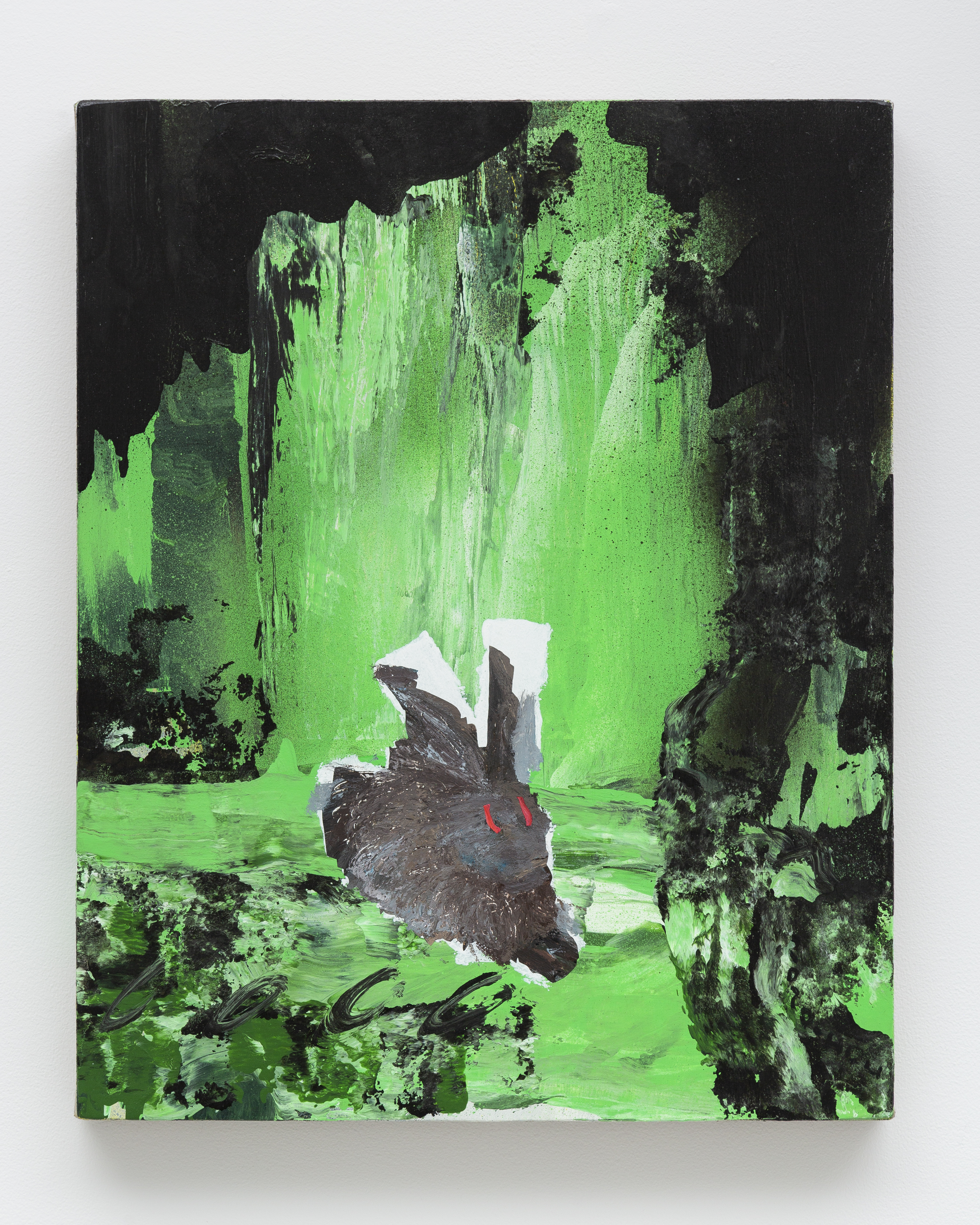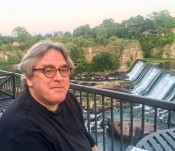Whitehot Magazine
September 2025
"The Best Art In The World"
"The Best Art In The World"
September 2025
Hou Zichao at Downs & Ross
 Hou Zichao, Hole sells the mind, flickering Kanas Lake, mountain reservoir, 2021. Acrylic on linen, 19 1/2 × 15 3/4 inches. Courtesy of the artist and Downs & Ross, New York. Photo: Daniel Terna.
Hou Zichao, Hole sells the mind, flickering Kanas Lake, mountain reservoir, 2021. Acrylic on linen, 19 1/2 × 15 3/4 inches. Courtesy of the artist and Downs & Ross, New York. Photo: Daniel Terna.
Hou Zichao: Everlasting
March 24 through May 1, 2021
By JONATHAN GOODMAN, April 2021
Hou Zichao is a young Beijing-based painter who was educated in London at St. Martins and the Chelsea College of Art and Design. He favors brightly colored canvases that look like a mixture of abstraction and roughly figurative art based on nature. Many of his backgrounds seem to be of outdoor environments, many of them alpine, while the imagery imposed on top of the backgrounds--trees, rats and a rabbit with red, eyes--animate and complicate his imagery. There is little rational sense to be had from these panoramas, but the atmosphere is enigmatically evocative, suggesting an apocalypse intensified by mystery. The paintings belong to an international idiom, befitting a Chinese artist working now, with degrees from Britain. While the colors and imagery can look very much like Pop art, the persistent strain of a mostly private scheme, formally and thematically, makes these paintings difficult examples of experiment. Even should the imagery resist comprehension, it enacts a theater in which alienation becomes an energetic means of communication.
 Hou Zichao, Hero runs, falling stone, stuttering occurs, 2021. Acrylic on linen, 78 3/4 × 59 inches. Courtesy of the artist and Downs & Ross, New York. Photo: Daniel Terna.
Hou Zichao, Hero runs, falling stone, stuttering occurs, 2021. Acrylic on linen, 78 3/4 × 59 inches. Courtesy of the artist and Downs & Ross, New York. Photo: Daniel Terna.
In Hole sells the mind, flickering Kanas Lake, mountain reservoir (2021), nothing directly refers to the lake, a body of water in Xinjiang Province in China. It consists of a gray rabbit in the midst of a beautifully painted green backdrop, jaggedly framed in three sides (excluding the bottom) in black. The green expanse might have been an abstract painting were it not for the rabbit, vividly rendered. It has orange-red eyes--are they signs of madness, or of a rabid state? Often in Hou Zichao's art, something macabre, suggestive of violence, enters into the painting. Another work, titled Hero runs, falling stone, stuttering occurs (2021), a pair of rats with high erect tails, occupy the lower right of a canvas given to an abstractly rendered, rough reddish brown, orange, and black ground. Again, like the Kanas Lake painting, the setting is as important as the eerie image of the rats, whose demonic eyes resemble those of the hare. These two paintings give little indication of a communicable meaning, but the atmosphere speaks for a lot, suggesting that nature is wilder, more untameable, than our overcrowded humanity allows for.
 Hou Zichao, Scenic construction, unfamiliar game goes extreme, 2021. Acrylic on linen, 47 1/4 × 35 1/2 inches. Courtesy of the artist and Downs & Ross, New York. Photo: Daniel Terna.
Hou Zichao, Scenic construction, unfamiliar game goes extreme, 2021. Acrylic on linen, 47 1/4 × 35 1/2 inches. Courtesy of the artist and Downs & Ross, New York. Photo: Daniel Terna.
Nature is regularly alluded to in Hou Zichao's art. In Scenic construction, unfamiliar game goes extreme (2021), a tree rises up past a white elevation shading into black peaks, with a dark blue sky indicating night. The tree’s trunk is regularly embellished by thin, rounded patches of green, which occur at intervals along the tree. The tree is simply described, to the point of being schematic, but the mountains are given a beauty that results from greater attention being paid to detail. The clash between the raw and the sophisticated is regularly available in Hou Zichao's paintings. In Near the tree, soul on holiday, how long is it? (2021), a tree with tall green fronds ascends in front of a mountainous white elevation, with areas of blue sky peeking through. On either side are seemingly abstract passages of black, but they seem real enough to suggest dark foliage. Somehow, and on a regular basis, Hou Zichao captures a wildness in nature that eludes most of us now. This partly occurs because he refuses to make sense, surreally combining figuration with images that are nonobjective. The hybrid approach appears a lot now; it makes good sense in contemporary art. But Hou Zichao does it particularly well.
Uneasy jade formation, butterfly visuality, wins dinner (2021) repeats the mountainous landscape we have come to expect from the artist. Its color is dark green, marbled slightly with white. In the center of the work is a large red steak with thick veins of white fat, painted rudely (it looks like it might be an image for a supermarket ad). How do we make sense of such deeply contrasting images? Do they suggest difference in ways of life, or is that too symbolic a reading? For whatever reason, Hou Zichao regularly reminds us of the gap, even in nature, between something beautiful and something more pedestrian. It is no one’s fault if we cannot merge the two categories, even when they are forcibly joined in the artist’s paintings. Hou Zichao is a young artist not to lose track of because he can neither forget the persistence of natural beauty nor the effectiveness of art. His commentary, which includes the vulgar, is representative of our time. WM

Jonathan Goodman
Jonathan Goodman is a writer in New York who has written for Artcritical, Artery and the Brooklyn Rail among other publications.
view all articles from this author









